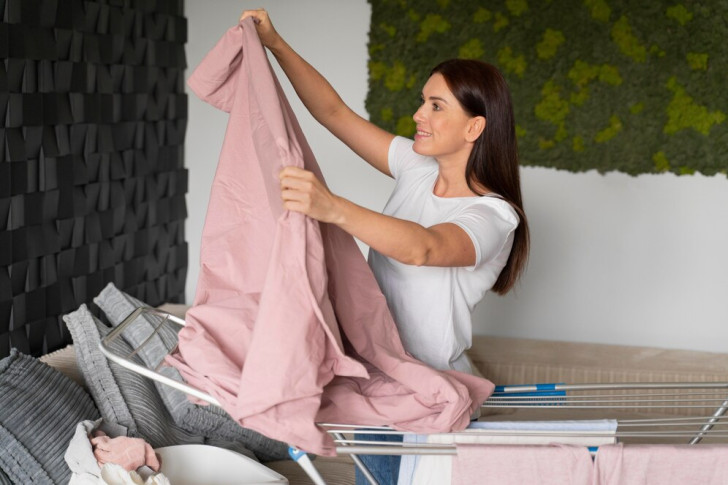Drying laundry indoors at home: how to choose the best spot to place your clothes horse

Freepik
When the weather is inclement and you don't have a tumble dryer, you probably have to hang up your clothes to dry indoors. However, there are areas of your home where you should never do this as the increase in humidity could cause mold to develop - itself posing a health risk. Given this, let's see how best - and where best - to dry laundry indoors without running any risks:
Places to avoid using
The places to avoid when choosing where to place your clothes horse/drying rack are those where you spend the most of your time during the day, ie. the bedroom, kitchen and bathroom.
Ideally, laundry should be able to dry out within 24 hours: if it takes longer, it means that the ventilation and temperatures are not ideal and there is a good chance mold will develop in the space you're using.
In general, increasing humidity in the bedroom or kitchen - unless we live in very dry environments - is not good for your health. And it's best to avoid using the bathroom because it is the most humid room in the house and already vulnerable to mold appearing.
The best positions for a clothes horse at home

Freepik
Ideally, a well-ventilated laundry room is the perfect place to dry clothes efficiently. However, not many of us have this luxury in our homes, so an alternative must be found.
A well-ventilated guest room, a garage or the attic are excellent places to place your clothes horse. Even a corner in the dining room or living room can do, especially if it is a spot that does not hinder movement and is bright and spacious enough to allow air to circulate properly.
How to reduce humidity in the home when drying laundry indoors
There are a number of things you can do to help reduce the increase in humidity in your home caused by clothes drying on a clothes horse indoors, for example:
- If the room chosen is rarely used, you can keep the door closed and open a window to allow air to circulate;
- If you must put the clothes horse in a room that is used frequently, then place it near heat sources and keep the door open (if possible);
- Avoid hanging clothes on a radiator (or at least only put small items on it and don't completely cover it). A completely covered radiator will spread water vapor throughout the room quickly;
- Consider using drying racks/clotheslines that can be hung from the ceiling, freeing up floor space and also improving air circulation in the room;
- When washing your clothes, put on a the top/fastest spin-dry cycle (of course, always taking into account the delicacy of the garments in the load);
- Place a dehumidifier in the room where you hang up your clothes;
- You can also use a small fan (like a table fan), to improve air circulation and dry your laundry faster;
- Use dry, clean towels to compress heavier items of clothing, thereby removing a lot of residual humidity before hanging them up.
With a little care, you can hang up your clothes to dry indoors and without the risks them starting to smell or mold developing!





